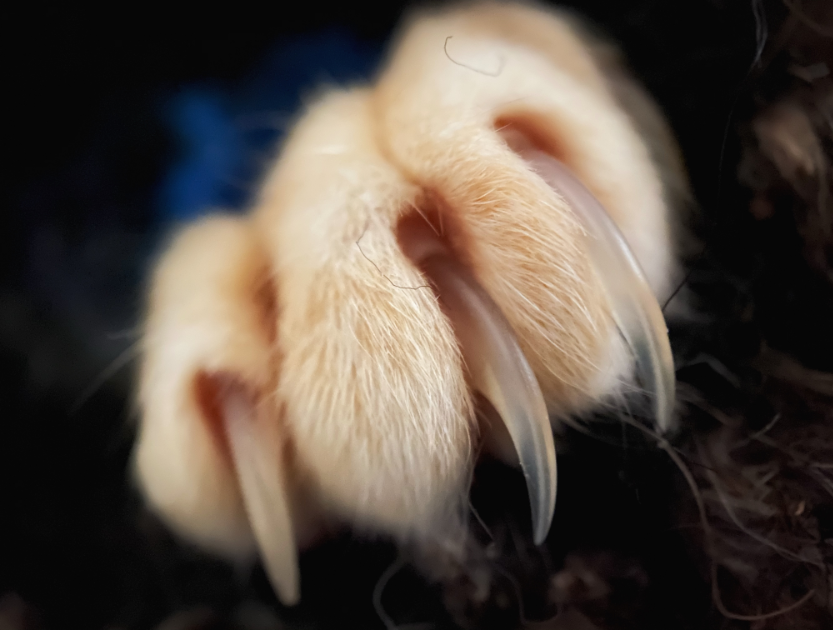34-year-old orangutan learns how to tie knots, and now we're wondering what else he can do
Could an orangutan learn to braid hair? The people want to know.

Patrick the orangutan is a knot-tying master.
We've all heard the stories about how intelligent the great apes are, the great apes being a family of primates that include chimpanzees, orangutans, gorillas, and bonobos. There've been many famous cases of gorillas learning sign language, caring for kittens, or otherwise showing pretty astounding human-like behaviors.
Remember Koko, the famous gorilla who knew over 1,000 American Sign Language gestures? Her language proficiency may have been overestimated at the time, but she did help to completely change the way we view the intelligence and capabilities of the great apes. More recently there was Kanzi, a bonobo, who showed amazing proficiency at understanding and communicating with language. Kanzi once demanded the materials for s'mores, made his own fire, and roasted his own marshmallows!
The next famous great ape just might be Patrick the chimpanzee, a resident at the Metro Richmond Zoo.

In a video posted to TikTok, the zoo notes that Patrick just turned 34. His zookeepers gave him a royal green cloak to mark the occasion.
If he looks a little different than you're used to, it's because Patrick has especially pronounced flanges, or puffy cheeks. Not all males have flanges, but the ladies dig them. So those big old cheeks are just one more reason Patrick is a total stud.
In the video, we see Patrick wrap the cloak around himself and tie it into a perfect knot. It's absolutely astonishing to watch. It's maybe less impressive than some of the greatest feats accomplished by Koko and Kanzi, but there's something so human about the moment. It makes you view these animals in a completely different light. Just watch him pull the knot tight and then double-knot it to make sure it won't budget. Amazing!
Watch the viral moment here:
@metrorichmondzoo Patrick turns 34, receives a royal cloak, and then ties the perfect knot - because even jungle royalty needs a signature look! 👑🦧✨ King behavior. #metrorichmondzoo #rva #orangutans #patricktheorangutan
5 million people viewed the video and were left in awe. They were also left wondering: What else can Patrick do?
Commenters had some interesting ideas:
"Now give him a fitted sheet and see what he can do"
"why do I feel like he could french braid my hair better than I can"
"Has anyone ever hugged him and if so what was it like?"
People were jokingly convinced that Patrick could speak, but chose not to:
"100% believe the conspiracy that they can talk but dont because they dont want humans to know"
Patrick isn't the first orangutan to tie knots. They've been observed doing it in the wild, and their weaving and tying skills are considered an extension of their nest-building behaviors.

But truly, what else can great apes do?
It was recently discovered that chimpanzees used medical plants to treat each other's wounds in the wild, in addition to using leaves to wipe themselves down after sex or pooping. This fits with the great apes well-known use of tools, but it also challenges the notion that humans are the only species that displays empathy and altruistic behaviors. Chimpanzees also have highly sophisticated memories and are capable of recalling specific events from years ago and even recognizing photos of themselves when they were younger.
Chimps and other apes have been proven to be able to perform basic math and some experts even say they have a photographic memory!
It's impossible to read all this and watch Patrick's intelligence on display without wondering whether great apes should ever be kept in captivity. They're so intelligent and capable of feeling, it seems cruel to keep them behind bars. But as conservation organizations have pointed out, many great apes simply can not be introduced back into the wild due to massive habitat loss. These creatures are endangered for a reason, and kudos go to the caring zookeepers who take care of them and help provide apes like Patrick with safe, enriching lives.




 Beaver on riverbank.
Beaver on riverbank.  Pbs Nature Swimming GIF by Nature on PBS
Pbs Nature Swimming GIF by Nature on PBS  An actual beaver dam on the now-thriving Price River
An actual beaver dam on the now-thriving Price River 
 Who doesn't love Pluto?
Who doesn't love Pluto?  Pluto agrees.
Pluto agrees. 
 a piece of paper with a heart drawn on it Photo by
a piece of paper with a heart drawn on it Photo by 
 "Bought an espresso machine, took some time to learn how to dial it in and pull a proper shot."
"Bought an espresso machine, took some time to learn how to dial it in and pull a proper shot." "Frozen meals are just as unhealthy, but much cheaper."
"Frozen meals are just as unhealthy, but much cheaper." "I’ve embraced the gray!"
"I’ve embraced the gray!"  "Bidet toilet seat is cheap, easy to install, much easier and faster to use."
"Bidet toilet seat is cheap, easy to install, much easier and faster to use."
 American portion sizes are colossal.Canva Photos
American portion sizes are colossal.Canva Photos American public restrooms aren't very private.Canva Photos
American public restrooms aren't very private.Canva Photos Cashiers in America stand all shift long.Canva Photos
Cashiers in America stand all shift long.Canva Photos America loves the Pledge of Allegiance.Canva Photos.
America loves the Pledge of Allegiance.Canva Photos. Cosmetic surgeries on pets are...a choice.Canva Photos.
Cosmetic surgeries on pets are...a choice.Canva Photos. America loves extra sugar in savory foods.Canva Photos.
America loves extra sugar in savory foods.Canva Photos.